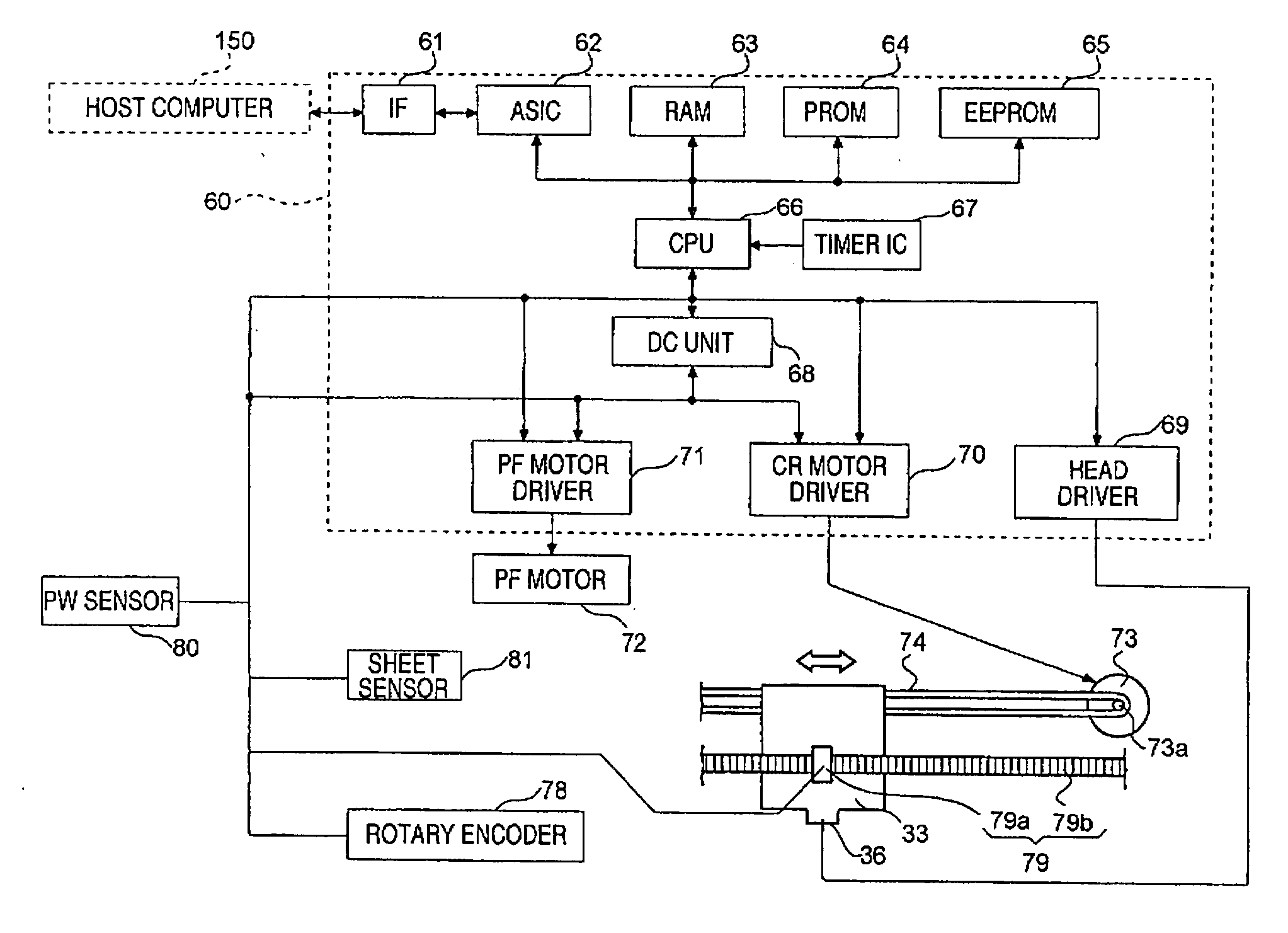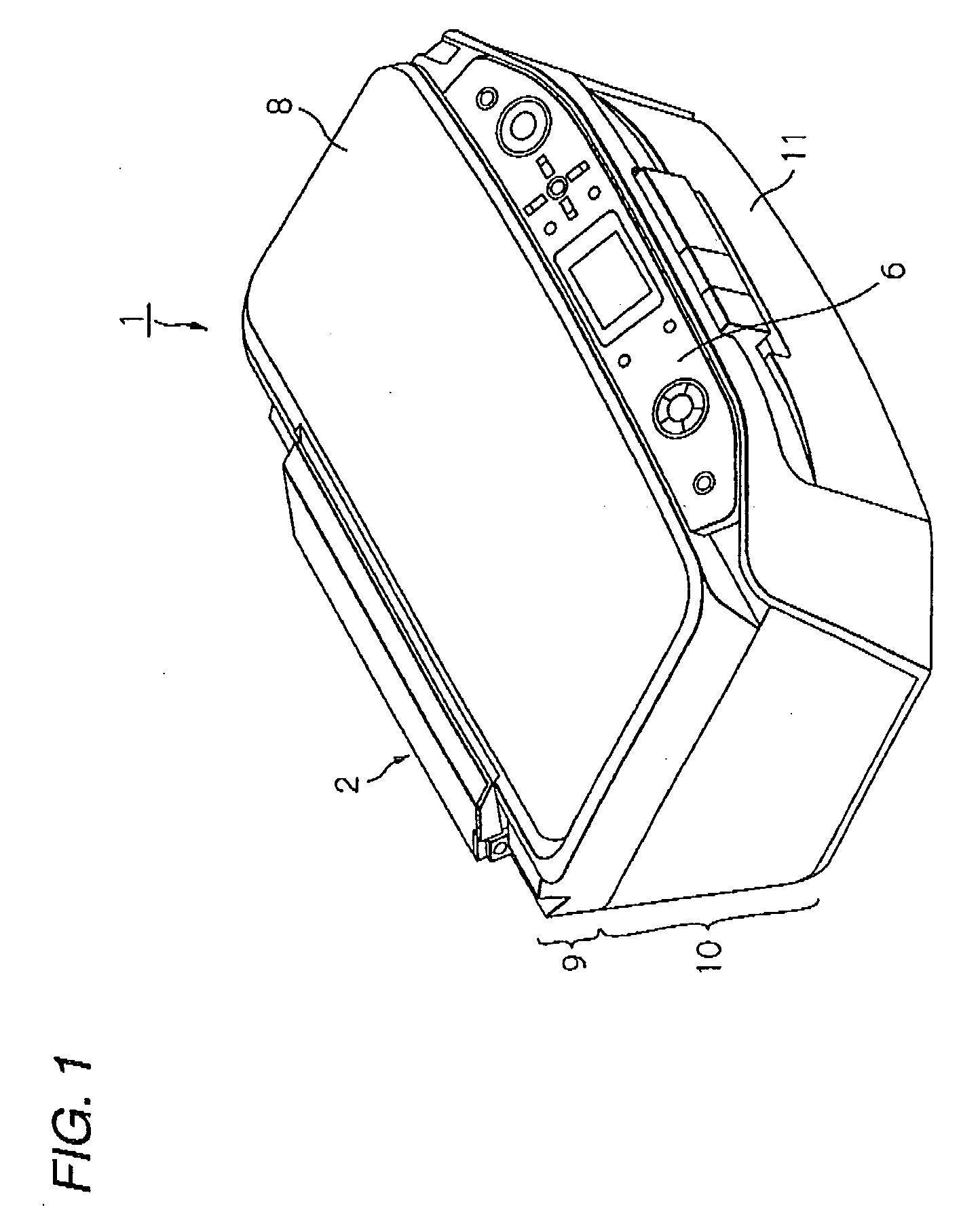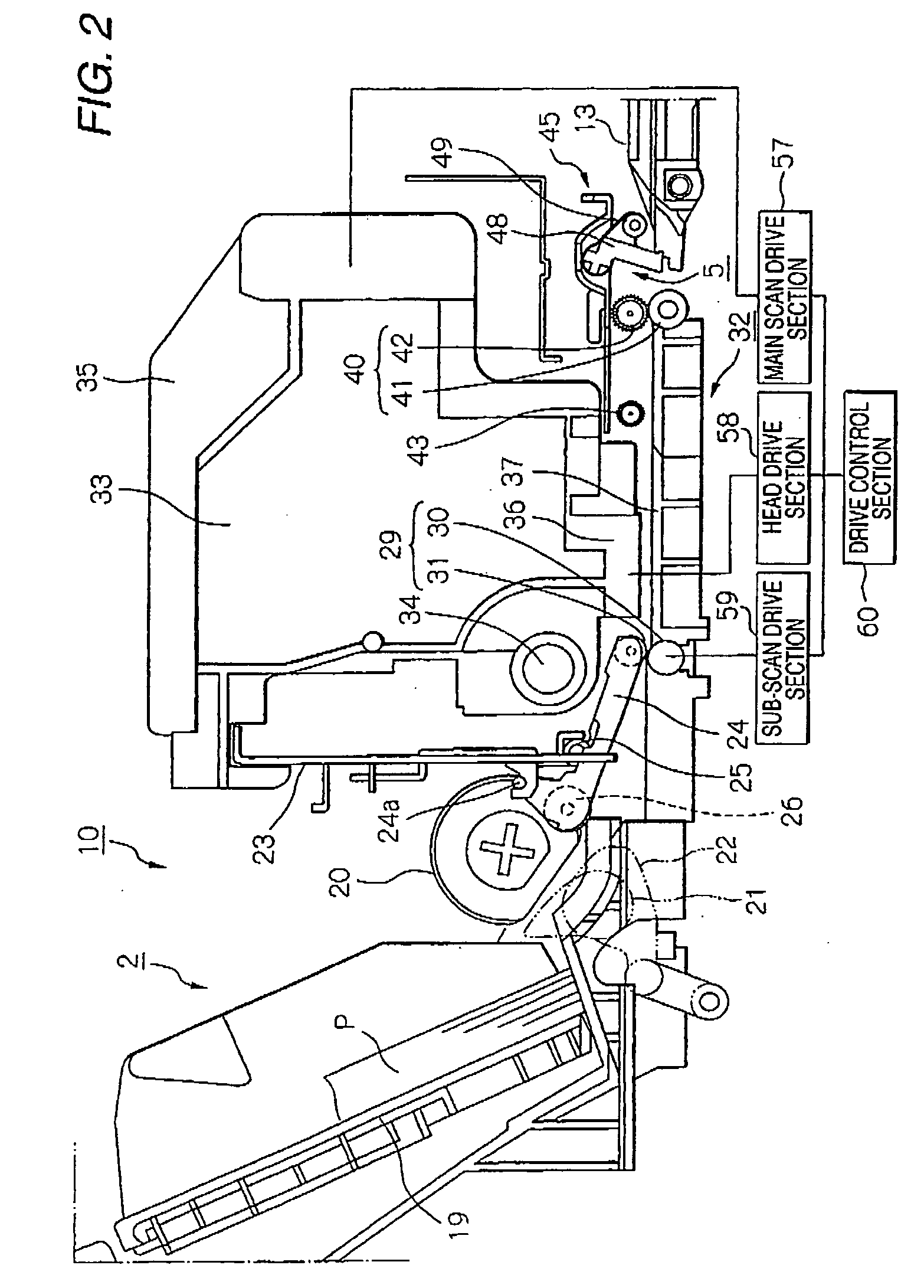Method of obtaining correction value of optical sensor and recording apparatus
a technology applied in the field of obtaining the correction value of optical sensors and recording equipment, can solve the problem that the recording head cannot adhere to an appropriate position during the actual recording operation, and achieve the effect of accurate position
- Summary
- Abstract
- Description
- Claims
- Application Information
AI Technical Summary
Benefits of technology
Problems solved by technology
Method used
Image
Examples
first embodiment
[0085] [First Embodiment]
[0086] Subsequently, by reference to FIGS. 5 to 12, a first embodiment of the present invention will be described. FIG. 5 is a plan view (a view of the carriage 33 when viewed from above) showing a positional relationship among the leading edge of the sheet P, the recording head 36, and the PW sensor 80. FIG. 6 is a plan view (a view of the carriage 33 when viewed from above) showing a positional relationship among the trailing edge of the sheet P, the recording head 36, and the PW sensor 80. FIG. 7 is a view showing a direction in which the edge of the sheet is sensed by the PW sensor 80. FIG. 8 is a view showing that a correction value obtainment pattern is formed along the leading edge of the sheet. FIG. 9 is a view showing that the correction value obtainment pattern is formed along a side edge of the sheet. FIGS. 10 through 12 are flowcharts showing procedures employed at the time of formation of the correction value obtainment pattern.
[0087] In FIGS. ...
second embodiment
[0121] [Second Embodiment]
[0122] Subsequently, a second embodiment will be described by reference to FIGS. 13 to 19. FIG. 13 is a view showing that the correction value obtainment pattern 200 is formed along the leading edge of the sheet; FIG. 14 is a view showing that the correction value obtainment pattern 200 is formed along the trailing edge of the sheet; and FIGS. 15 to 19 are flowcharts showing procedures for forming the correction value obtainment pattern along the upper and trailing edges and the right and left sides of the sheet P.
[0123] The correction value obtainment pattern 200 shown in FIG. 13 is analogous to that shown in FIG. 8, but differs from the first embodiment in terms of a method for detecting the leading edge of the sheet.
[0124] Specifically, when the leading edge of the sheet P has an inclination angle θ with respect to the line parallel to the direction “x” as shown in FIG. 13, the detected position of the leading edge additionally includes an error attrib...
PUM
 Login to View More
Login to View More Abstract
Description
Claims
Application Information
 Login to View More
Login to View More - R&D
- Intellectual Property
- Life Sciences
- Materials
- Tech Scout
- Unparalleled Data Quality
- Higher Quality Content
- 60% Fewer Hallucinations
Browse by: Latest US Patents, China's latest patents, Technical Efficacy Thesaurus, Application Domain, Technology Topic, Popular Technical Reports.
© 2025 PatSnap. All rights reserved.Legal|Privacy policy|Modern Slavery Act Transparency Statement|Sitemap|About US| Contact US: help@patsnap.com



